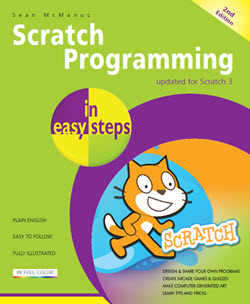In the short time frame from first semester to second semester I already feel a lot more at ease when I see ICT on my timetable. I am basically guaranteed to have an interactive and productive lesson. Experiences I can pass on to the children I hope to teach one day.
The most recent has topped the tables and is the fore runner for ‘most fun day’ at university yet! Sharon introduced us to the impact of simple animation and the ease with which we could then implement that in the classroom. We were shown the software programmes Pivot and Zu3D.
Within the curriculum for excellence, TCH 3-09a – using appropriate software, I can work individually or collaborativey to design and implement a game, animation or other application. Above and beyond that, throughout the activity I felt I gained confidence and skills that I could then apply to different concepts and it could open onto a discussion about the power animation has in adverts and the consumer world around us.
The software could be broken down into digestible steps dependent on age group. Communication and active listening would be needed but I feel that if the children can be shown by example on a larger scale, that support coming from not only the teacher but their peers would help cement the steps. Being able to make mistakes and then shown that there are ways and means to correct them would also be beneficial.
We were able to collaborate and bring our ideas together to create what I can only describe as Oscar-worthy, Crash-Mash
Hold your applause… I found the activity fun and there was scope for so many different ideas! We got to add music and could have delved further if spaced out over a few lessons.
I believe the lesson could be approached in a constructivist manner like Vygotsky’s Zone of Proximal Development. Utilising the skills of their peers and working with the teacher to build on those skills and develop them further. This would then lead them to feel confident enough to complete a group task and voice their opinions. The cognitive constructivism would need to be addressed individually and this could mean going round the class, possibly writing down the steps or making that information visual with a step by step guide opposed to just verbally relaying the information. The outcome itself is something that could be kept for evidence and a point to build upon through further steps. But watching the groups work would be an insight into their communication and delegation skills. Opening up the chance for a field trip to a computer programming base within Dundee.
Sharon also gave us helpful advice about how to keep the children’s attention and I would like to open a lesson like this with a visual and audio stimulus. Getting the children to close there eyes and listen to a piece of music then possibly watch a short animation with no sound. Being able to then make the link between the two and the co-dependency of these stimuli in the world around us.
I look forward to trying to integrate this animation lesson into my placement school as I have seen they engage heavily with twitter and coding. It’s definitely an area I need to research and I have got copies of a couple books I feel will help. Hopefully I can read myself a bit more savvy but hands on experience will be better to reflect upon and grow from.


